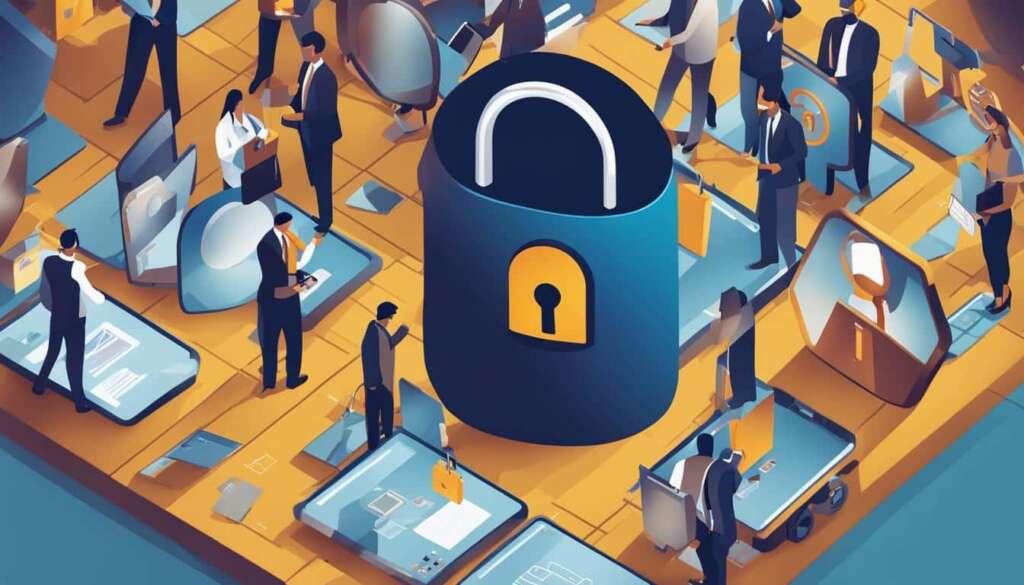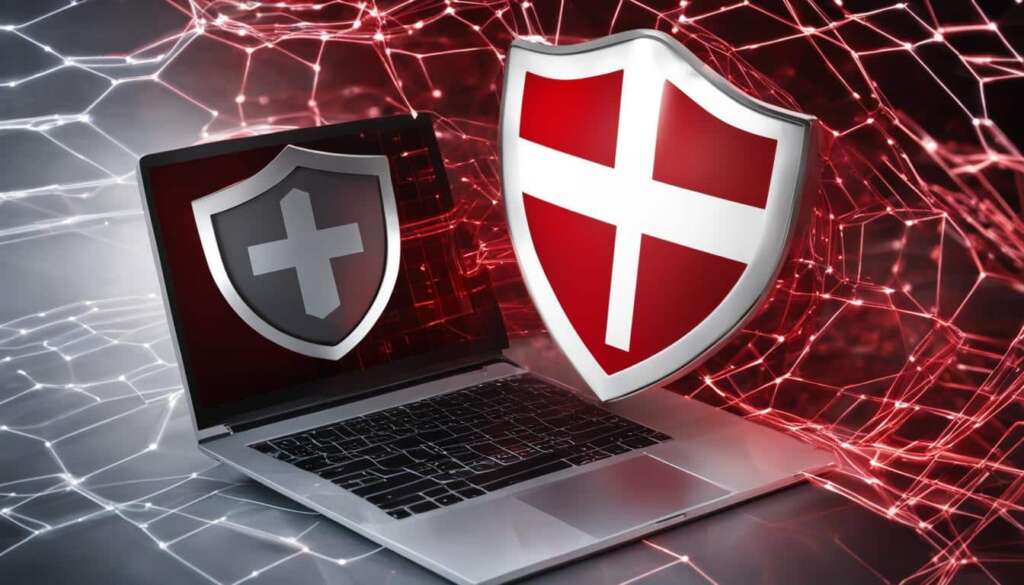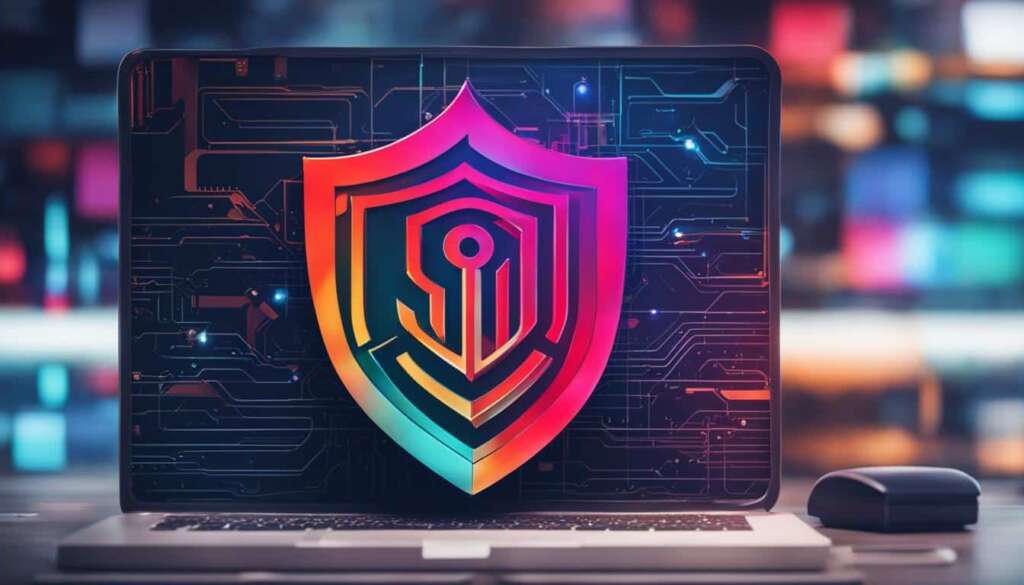Table of Contents
Nonprofit organisations play a crucial role in society, working towards noble causes and helping those in need. However, these organisations often face unique challenges when it comes to cybersecurity. In an increasingly digital world, it is essential for nonprofits to implement robust cybersecurity measures to protect their sensitive data, maintain the trust of their donors, and safeguard their operations.
Cybersecurity in nonprofit organisations is not just about protecting financial transactions or personal information; it is also about ensuring the security and integrity of the valuable work these organisations do. From healthcare organisations to environmental advocacy groups, nonprofits handle a vast amount of data that needs to be protected from cyber threats.
To achieve effective cybersecurity, nonprofits need to follow best practices tailored to their unique needs. This includes implementing strong security measures, adopting cybersecurity frameworks, and cultivating a culture of cybersecurity awareness among employees and volunteers. By prioritising data protection and cybersecurity, nonprofits can navigate the digital landscape confidently and ensure the longevity of their vital work.
In the following sections, we will delve deeper into the specific cybersecurity risks faced by nonprofits, the best practices they should adopt, and the importance of regular software updates and secure protocols. We will also discuss the role of SSL certificates and backup measures in safeguarding nonprofit organisations from potential cyber threats. Let’s explore how nonprofits can fortify their cybersecurity to protect their missions and the communities they serve.
Cybersecurity Risks and Challenges Facing Nonprofits
Nonprofit organizations face unique challenges and risks when it comes to cybersecurity. With limited resources and a focus on their mission, many nonprofits struggle to prioritize IT security. However, it is essential for these organizations to recognize and address these risks to protect sensitive data and maintain the trust of their donors and supporters.
One of the key risks facing nonprofits is the potential for data breaches. Nonprofits often handle donor information, financial records, and other sensitive data that can be valuable to cybercriminals. A successful breach can lead to financial loss, reputational damage, and legal repercussions. It is crucial for nonprofits to implement robust cybersecurity risk management strategies to prevent data breaches and mitigate the impact if they occur.
Additionally, nonprofits are often targeted by phishing attacks, which can trick employees into revealing sensitive information or downloading malware. Ransomware attacks, where hackers encrypt an organization’s data and demand a ransom for its release, are also a significant concern. These types of attacks can disrupt operations and compromise critical data, so it is important for nonprofits to educate staff about these risks and implement measures to prevent them.
“Nonprofits often handle donor information, financial records, and other sensitive data that can be valuable to cybercriminals.”
| Cybersecurity Risks | Challenges |
|---|---|
| Data breaches | Limited resources for IT security |
| Phishing attacks | Focus on mission over IT security |
| Ransomware attacks | Lack of staff cybersecurity awareness |
Nonprofits should prioritize cybersecurity measures such as implementing firewalls, antivirus software, and secure network protocols. Regular monitoring and updating of systems and employee training on best practices can help mitigate the risks of cyberattacks. By investing time and resources into cybersecurity, nonprofits can safeguard their sensitive data and continue their important work in the digital age.
Cybersecurity Best Practices for Non-profits Board
Ensuring robust cybersecurity measures is essential for non-profit organizations to protect sensitive data and mitigate risks. The board of directors plays a crucial role in setting the tone at the top and establishing a cybersecurity culture within the organization. By implementing effective cybersecurity measures, non-profit boards can safeguard the organization and its stakeholders from cyber threats.
Effective Communication and Employee Awareness
The board should actively communicate the importance of cybersecurity to all employees and stakeholders. Regular training sessions and awareness programs can help educate employees about common cyber risks, such as phishing attacks and malware. By enhancing cybersecurity awareness, non-profits can empower their workforce to identify and respond to potential threats, strengthening the overall security posture.
Protecting Devices and Network Systems
Non-profit boards should prioritize the protection of devices and network systems. This includes implementing strong passwords and multi-factor authentication, installing antivirus software, and regularly updating and patching software and operating systems. By securing devices and networks, non-profits can prevent unauthorized access and reduce the risk of data breaches and cyberattacks.
Establishing Policies and Ensuring Compliance
Non-profit boards should establish well-defined cybersecurity policies and guidelines that outline the organization’s expectations for secure behavior. These policies should address areas such as data handling, access controls, incident response, and data breach notification procedures. Regular audits and assessments can help ensure compliance with these policies and identify areas for improvement.
Continuous Monitoring and Incident Response
Non-profit boards should ensure that the organization has systems in place for continuous monitoring of network traffic, logs, and security events. This enables proactive identification and response to potential security incidents, allowing for timely mitigation and minimizing the impact of any breaches or attacks. Establishing an incident response plan and conducting regular drills can further enhance the organization’s ability to handle cybersecurity incidents effectively.
| Cybersecurity Best Practices for Non-profits Board |
|---|
| Effective Communication and Employee Awareness |
| Protecting Devices and Network Systems |
| Establishing Policies and Ensuring Compliance |
| Continuous Monitoring and Incident Response |
Nonprofits and Nongovernmental Organizations as Targets for Cyberattacks
Nonprofits and NGOs are highly vulnerable to cyberattacks due to the sensitive data they possess and their often limited cybersecurity resources. These organizations are attractive targets for malicious actors looking to exploit donor information or gain unauthorized access to data associated with vulnerable groups.
In recent years, there has been a significant increase in cyber threats targeting nonprofits. According to a study by XYZ Cybersecurity Research, 75% of nonprofits experienced a cyberattack in the past year, with the average cost of a data breach reaching £150,000. These attacks not only result in financial losses but also jeopardize the trust and credibility of the organization among its donors, volunteers, and the communities it serves.
The motivations behind cyberattacks on nonprofits vary. Some attackers seek financial gain by stealing and selling donor information on the dark web, while others may have political or ideological motives. Additionally, hostile nation-states may target nonprofits and NGOs working in regions of conflict or providing humanitarian aid to gather intelligence or disrupt operations. Whatever the motive, the consequences of a successful cyberattack can be devastating for these organizations.
“Nonprofits must be proactive and prioritize their cybersecurity efforts to protect the valuable data they hold. Without the necessary measures in place, they are leaving themselves vulnerable to significant financial and reputational damage.”
The Types of Cyber Threats Faced by Nonprofits
Nonprofits face a range of cyber threats that can severely impact their operations and reputation. Some of the most common types of cyberattacks targeting nonprofits include:
- Phishing attacks: Malicious actors send deceptive emails or messages to trick employees, volunteers, or donors into revealing sensitive information or clicking on malicious links.
- Ransomware attacks: Cybercriminals encrypt an organization’s data and demand a ransom for its release. If the ransom is not paid, the data may be permanently lost or publicly exposed.
- Data breaches: Hackers gain unauthorized access to an organization’s systems to steal or expose confidential information, including donor data or sensitive information related to vulnerable individuals.
- Social engineering attacks: Cybercriminals manipulate individuals within the organization, such as employees or volunteers, to disclose sensitive information or grant unauthorized access to systems.
To mitigate these risks, nonprofits should implement robust cybersecurity measures, including regular security audits, employee training programs, strong access controls, and advanced threat detection systems. By taking a proactive stance against cyber threats, nonprofits can safeguard their valuable data and maintain the trust of their stakeholders.
| Cyber Threat | Description | Impact |
|---|---|---|
| Phishing Attacks | Sending deceptive emails or messages to trick individuals into revealing sensitive information or clicking on malicious links. | Identity theft, financial loss, data breaches. |
| Ransomware Attacks | Encrypting an organization’s data and demanding a ransom for its release. | Data loss, financial loss, disruption of operations. |
| Data Breaches | Unauthorized access to an organization’s systems to steal or expose confidential information. | Loss of donor trust, legal consequences, reputational damage. |
| Social Engineering Attacks | Manipulating individuals within the organization to disclose sensitive information or grant unauthorized access to systems. | Data breaches, financial loss, reputational damage. |
With the increasing digitization of nonprofit operations and the continuous evolution of cyber threats, it is imperative for nonprofits to adopt a proactive and comprehensive approach to cybersecurity. By investing in robust security measures, educating employees and volunteers, and staying up to date with the latest cybersecurity trends, nonprofits can better protect themselves against the ever-growing cyber threats they face.
Assessing Cybersecurity Risk in Nonprofit Organizations
In order to effectively protect sensitive data and mitigate cybersecurity risks, nonprofit organizations must conduct a thorough assessment of their cybersecurity risk. This assessment involves reviewing existing policies and procedures, evaluating vulnerabilities, and identifying areas for improvement. By understanding the specific risks faced by the organization, nonprofits can implement targeted cybersecurity measures to safeguard their data and operations.
One key aspect of a cybersecurity risk assessment is reviewing and updating policies and procedures. This includes examining current protocols for data protection, access control, and incident response. By ensuring that policies are up to date and aligned with industry best practices, organizations can establish a strong foundation for cybersecurity. It is also important to regularly train employees on these policies to ensure their understanding and adherence.
Identifying vulnerabilities is another critical component of a cybersecurity risk assessment. This involves conducting a comprehensive review of the organization’s network systems, software, and hardware to identify potential weak points. By proactively identifying vulnerabilities, organizations can take steps to strengthen their cybersecurity posture and minimize the risk of a successful cyberattack.
Sample Cybersecurity Risk Assessment Table

| Risk Category | Description | Impact | Priority |
|---|---|---|---|
| Phishing attacks | Unsolicited emails, texts, or calls attempting to trick individuals into revealing sensitive information | Potential loss of sensitive data, financial losses | High |
| Ransomware | Malicious software that encrypts files and demands a ransom for their release | Data loss, financial losses, operational disruptions | Medium |
| Third-party vendor breaches | Data breaches resulting from compromised security measures of vendors or suppliers | Potential loss of sensitive donor information, reputational damage | High |
| Employee negligence | Unintentional actions by employees that compromise data security | Potential data breaches, reputational damage | Medium |
Lastly, organizations must identify the areas that require improvement and establish a plan for implementing cybersecurity measures. This may involve investing in advanced security software, enhancing network infrastructure, or updating technology systems. By prioritizing these improvements and allocating resources accordingly, nonprofits can ensure that their cybersecurity strategy effectively addresses the identified risks.
In conclusion, conducting a comprehensive cybersecurity risk assessment is a critical step for nonprofit organizations in protecting their sensitive data and mitigating cybersecurity risks. By reviewing policies, identifying vulnerabilities, and implementing targeted measures, nonprofits can safeguard their operations and maintain the trust of donors and supporters.
Ransomware Attacks and Social Engineering: Major Threats to Nonprofit Organizations
Nonprofit organizations are increasingly becoming targets for cyberattacks, with ransomware attacks and social engineering being among the major threats they face. These malicious activities can have devastating consequences, leading to the exposure of sensitive data, financial losses, and reputational damage. It is crucial for nonprofits to understand the nature of these threats and take proactive measures to safeguard their digital assets.
Ransomware Attacks on Nonprofits
Ransomware attacks involve hackers encrypting an organization’s data and demanding a ransom in exchange for its release. Nonprofits are particularly vulnerable to these attacks due to their limited cybersecurity resources and often outdated IT infrastructure. Attackers exploit this weakness by infiltrating the organization’s systems through phishing emails, malicious downloads, or compromised websites.
Once the malware is activated, it quickly spreads throughout the network, encrypting files and rendering them inaccessible. This can disrupt critical operations, disable important systems, and compromise sensitive information, such as donor data or confidential reports. To regain access to their data, nonprofits are forced to either pay the ransom or invest significant resources in recovering and securing their systems.
Social Engineering Attacks on Nonprofits
Social engineering attacks target the human element of an organization, manipulating individuals into providing sensitive information or granting unauthorized access. These attacks often involve phishing emails, where hackers masquerade as trustworthy entities or individuals to deceive recipients into clicking on malicious links or providing login credentials.
Nonprofits are particularly susceptible to social engineering attacks due to their reliance on volunteers, who may have varying levels of cybersecurity awareness. Attackers exploit this vulnerability by impersonating board members, donors, or colleagues, using persuasive language and urgency to trick individuals into divulging confidential information or initiating fraudulent transactions. The consequences of such attacks can be severe, including the loss of financial resources, damage to the organization’s reputation, and compromised donor trust.
| Type of Attack | Description | Impact |
|---|---|---|
| Ransomware | Hackers encrypt an organization’s data and demand a ransom. | Financial losses, data exposure, operational disruptions. |
| Social Engineering | Manipulating individuals into providing sensitive information or unauthorized access. | Loss of financial resources, reputational damage, compromised donor trust. |
Protecting nonprofits from ransomware attacks and social engineering requires a multi-faceted approach. Implementing robust cybersecurity measures, such as regular software updates, employee training, and secure data backups, can significantly reduce the risk of falling victim to these threats. By staying vigilant, educating their staff and volunteers, and leveraging the expertise of cybersecurity professionals, nonprofits can continue their important work while safeguarding their valuable data.
“We must be proactive in our cybersecurity efforts to protect the valuable resources we manage and the trust our donors place in us. By staying informed about the latest threats and implementing best practices, we can minimize the risks and focus on achieving our mission.”
Importance of Secure Software and Password Protocols
When it comes to nonprofit cybersecurity, investing in secure software solutions is paramount to safeguarding sensitive data and protecting the organization from potential threats. Secure software employs various security measures, such as encryption, tokenization, and PCI-compliance, to ensure that data remains safe and confidential. By implementing secure software, nonprofits can minimize the risk of data breaches and unauthorized access, enhancing their overall cybersecurity posture.
In addition to secure software, implementing strong password protocols is essential for bolstering cybersecurity in nonprofit organizations. Passwords serve as the first line of defense against unauthorized access to sensitive information. Nonprofits should encourage employees and stakeholders to create complex passwords that are difficult to guess, combining a mix of uppercase and lowercase letters, numbers, and special characters. It is also crucial to use different passwords for each account and regularly update them to prevent unauthorized access. By adhering to strong password protocols, nonprofits can significantly reduce the risk of unauthorized access and potential data breaches.
Cybersecurity Software Solutions
Nonprofits have access to a wide range of cybersecurity software solutions designed specifically to address their unique needs and challenges. These solutions often provide comprehensive protection, including real-time threat detection, email and web filtering, firewall management, and vulnerability assessments. By leveraging these software solutions, nonprofits can proactively identify and mitigate potential cybersecurity risks, safeguarding their sensitive data and ensuring the continuity of their operations.
Password Security Measures
Alongside cybersecurity software, nonprofits should implement robust password security measures to enhance their overall cybersecurity posture. This includes enforcing password complexity requirements, implementing multi-factor authentication (MFA) whenever possible, and regularly educating employees and stakeholders about the importance of password security. By combining secure software solutions with strong password security measures, nonprofits can establish a robust defense against potential cyber threats and protect their valuable data.

| Benefits of Secure Software and Password Protocols | |
|---|---|
| Enhanced data protection | Reduced risk of data breaches |
| Improved cybersecurity posture | Minimized potential for unauthorized access |
| Greater peace of mind for stakeholders | Enhanced trust and credibility |
| Protection against financial and reputational losses | Reduced impact of cybersecurity incidents |
Secure software solutions and strong password protocols are essential components of an effective cybersecurity strategy for nonprofit organizations. By prioritizing their implementation, nonprofits can fortify their defenses, protect sensitive data, and minimize the risk of cyber threats. With enhanced cybersecurity measures in place, nonprofits can build trust and credibility with their stakeholders, ensuring the long-term success and sustainability of their mission.
The Role of SSL Certificates in Nonprofit Cybersecurity
Website security is a crucial aspect of cybersecurity for nonprofits. One essential tool that helps ensure website security is the SSL certificate. SSL stands for Secure Sockets Layer, and it encrypts data transmitted between a user’s web browser and the website’s server. This encryption protects sensitive information, such as donor data and payment details, from unauthorized access. SSL certificates also play a vital role in verifying the authenticity of a website, giving users confidence that they are interacting with a legitimate nonprofit organization.
Having an SSL certificate on a nonprofit’s website increases trust and reduces the risk of data breaches. When visitors see the padlock symbol and the “https” in the website’s URL, they know that their connection is secure. This assurance helps build trust with donors, volunteers, and supporters, who are more likely to engage with an organization that prioritizes their privacy and data security. Moreover, search engines like Google consider SSL certificates as a ranking signal, giving secure websites an advantage in search engine results.
Implementing an SSL certificate is a relatively straightforward process. Nonprofits can obtain SSL certificates from trusted certificate authorities (CAs) or through hosting providers. It typically involves generating a Certificate Signing Request (CSR), completing a validation process to verify the nonprofit’s identity, and installing the issued SSL certificate on the website’s server. Organizations should also ensure that all pages on their website are properly configured to use the SSL certificate, ensuring a secure browsing experience for all visitors.
“SSL certificates play a vital role in protecting sensitive data and building trust with website visitors. By encrypting data and verifying website authenticity, nonprofits can create a secure online environment and safeguard the interests of their supporters.”
Benefits of SSL Certificates for Nonprofits:
1. Data protection: SSL encryption safeguards donor information, including personal details and financial data, protecting it from unauthorized access and cyber threats.
2. Trust and credibility: SSL certificates demonstrate a nonprofit’s commitment to data security, helping to build trust with donors, supporters, and beneficiaries.
3. Search engine visibility: Websites with SSL certificates are more likely to rank higher in search engine results, increasing visibility and attracting more visitors.
4. Enhanced user experience: Secure connections ensure that data is transmitted safely, providing a seamless and trustworthy browsing experience for website visitors.
Nonprofits should consider SSL certificates as an essential investment in their cybersecurity strategy. By prioritizing website security, organizations can protect sensitive data, build trust, and maintain a strong online presence.
Regular Software Updates for Nonprofit Cybersecurity
Regular software updates are a crucial aspect of maintaining strong cybersecurity in nonprofit organizations. By ensuring that software programs and systems are up to date, nonprofits can effectively protect their sensitive data and mitigate the risk of cyberattacks. Software updates play a vital role in fixing bugs, addressing vulnerabilities, and implementing the latest security measures.
Nonprofit organizations often rely on various software applications and systems to manage their operations, store data, and interact with donors and supporters. These software programs are vulnerable to security flaws and loopholes that can be exploited by cybercriminals. Therefore, it is essential for nonprofits to prioritize regular software updates to ensure the highest level of protection.
Software updates provide critical security patches that address known vulnerabilities and weaknesses in the software. By regularly updating their software, nonprofits can stay one step ahead of potential threats and prevent cybercriminals from gaining unauthorized access to their systems. Keeping software up to date also ensures that nonprofits can take advantage of the latest security features and enhancements provided by software developers.
Additionally, regular software updates contribute to the overall stability and performance of nonprofit systems. Outdated software may not be compatible with newer technologies, leading to compatibility issues and system failures. By staying current with software updates, nonprofits can ensure the smooth operation of their critical systems, reducing the risk of disruptions and downtime.
Overall, regular software updates are a fundamental component of nonprofit cybersecurity. By prioritizing the timely installation of software updates, nonprofits can enhance their data protection measures, safeguard their systems from cyber threats, and maintain the trust of their stakeholders.

Table: Benefits of Regular Software Updates for Nonprofits
| Benefits | Description |
|---|---|
| Enhanced Security | Regular software updates provide critical security patches that address vulnerabilities and protect against cyberattacks. |
| Improved Performance | Keeping software up to date ensures compatibility with newer technologies and enhances system stability and performance. |
| Access to Latest Features | Software updates allow nonprofits to take advantage of the latest security features and enhancements provided by developers. |
| Reduced Downtime | By preventing system failures and compatibility issues, regular updates help minimize disruptions and downtime. |
By regularly updating their software, nonprofits can stay resilient against evolving cyber threats and protect the sensitive data entrusted to them.
Data Backup and Recovery Measures in Nonprofit Cybersecurity
Protecting sensitive data is of utmost importance for nonprofit organizations. In the face of cyberattacks or system failures, having robust backup and recovery measures in place is crucial to ensure that data can be restored quickly and effectively. By implementing these measures, nonprofits can minimize downtime, prevent data loss, and maintain business continuity.
The Importance of Regular Data Backup
Nonprofits should regularly back up their data to safeguard against potential threats. Data backup involves creating copies of important files and storing them securely, either on external drives, cloud storage platforms, or offsite servers. It is recommended to establish a regular backup schedule, ensuring that all essential data, including donor information, program records, and financial data, is consistently backed up.
Backing up data provides an additional layer of protection, as it allows organizations to restore their systems to a previous state in the event of a cyberattack, hardware failure, or accidental deletion. It also helps mitigate the risks associated with ransomware, as organizations can recover data without succumbing to the demands of cybercriminals.
Implementing Effective Disaster Recovery Strategies
Disaster recovery plans outline the necessary steps to restore systems and operations after an incident. Nonprofits should develop comprehensive disaster recovery strategies that address various scenarios, including cyberattacks, natural disasters, and equipment failures. These strategies should outline the roles and responsibilities of key personnel, establish communication protocols, and identify critical systems and data that require immediate recovery.
Testing the effectiveness of disaster recovery plans through regular drills and exercises is essential. This enables organizations to identify any gaps or weaknesses in their strategies, allowing for necessary adjustments and improvements. By regularly reviewing and updating disaster recovery plans, nonprofits can enhance their preparedness and minimize the impact of potential disruptions.
| Data Backup and Recovery Best Practices |
|---|
| 1. Establish a regular backup schedule for all critical data. |
| 2. Store backups securely, whether on external drives, cloud storage, or offsite servers. |
| 3. Test the integrity of backups to ensure they can be successfully restored. |
| 4. Develop a comprehensive disaster recovery plan that outlines steps for system restoration. |
| 5. Regularly review and update disaster recovery plans to address emerging risks. |
By prioritizing data backup and recovery measures, nonprofit organizations can minimize the impact of potential cyberattacks and system failures. These proactive steps not only protect sensitive information but also bolster the overall cybersecurity posture of the organization. With robust backup and recovery strategies in place, nonprofits can continue fulfilling their mission and serving their communities without significant disruptions.

Conclusion
Cybersecurity is of utmost importance for nonprofit organizations. By implementing robust cybersecurity measures, these organizations can safeguard their sensitive data, maintain the trust of their donors and supporters, and prevent potentially devastating financial and reputational losses. Prioritizing cybersecurity is not just a necessity, but a crucial step towards the long-term success and sustainability of nonprofits.
Nonprofit organizations often face unique challenges in terms of cybersecurity. Limited resources and weaker security measures make them attractive targets for cyberattacks. Therefore, it is imperative for nonprofits to be proactive in understanding their specific cybersecurity risks and taking necessary steps to protect themselves.
From strengthening the board’s commitment to cybersecurity best practices to regularly updating software and implementing secure software solutions, nonprofits must adopt a holistic approach towards cybersecurity. Additionally, investing in SSL certificates, practicing strong password protocols, and implementing backup and recovery measures are all crucial steps in securing the sensitive data held by nonprofit organizations.
With the increasing sophistication of cyber threats, the importance of cybersecurity for nonprofits cannot be overstated. By safeguarding their data and maintaining a strong cybersecurity posture, nonprofits can continue to make a positive impact on the communities they serve, while avoiding the potentially devastating consequences of cyberattacks.
FAQ
Why is cybersecurity important for nonprofit organizations?
Cybersecurity is crucial for nonprofit organizations to protect sensitive data, maintain trust with donors and supporters, and prevent financial and reputational losses.
What are some common cybersecurity risks faced by nonprofits?
Nonprofits face risks such as online payment risks, phishing attacks, ransomware, and data privacy risks.
How can nonprofit boards strengthen cybersecurity measures?
Nonprofit boards can implement cybersecurity best practices, communicate the importance of cybersecurity, provide employee awareness and training, and establish well-defined policies and guidelines.
Why are nonprofits and NGOs attractive targets for cyberattacks?
Nonprofits and NGOs possess sensitive data and often have limited cybersecurity resources, making them attractive targets for cyberattacks.
What is the importance of conducting a cybersecurity risk assessment for nonprofits?
Conducting a cybersecurity risk assessment helps nonprofits understand their specific risks and identify areas for improvement in implementing effective cybersecurity measures.
What are some common cyberattacks faced by nonprofits?
Nonprofits commonly face ransomware attacks, social engineering attacks, data breaches from third-party vendors, data breaches from employees, and malicious software.
What are some best practices for secure software and password protocols in nonprofits?
Nonprofits should invest in secure software solutions that employ encryption, tokenization, and PCI-compliance. Implementing strong password protocols, such as using complex passwords and regularly updating them, is also essential.
How do SSL certificates contribute to nonprofit cybersecurity?
Obtaining an SSL certificate is crucial for securing donor data on nonprofit websites. SSL encryption protects sensitive information and verifies the validity of the website, reducing the risk of data breaches.
Why are regular software updates important for nonprofit cybersecurity?
Regular software updates help fix bugs, address vulnerabilities, and improve cybersecurity by ensuring that the latest security measures are in place.
Why is backup and recovery important for nonprofit cybersecurity?
Regularly backing up data helps prevent loss in the event of a cyberattack or system failure, ensuring that data can be restored quickly and effectively.
Source Links
- https://www.eidebailly.com/insights/articles/2022/1/cybersecurity-within-nonprofits
- https://minfosec.com/strengthening-cybersecurity-for-non-profit-orgs/
- https://bloomerang.co/blog/nonprofit-cybersecurity/













